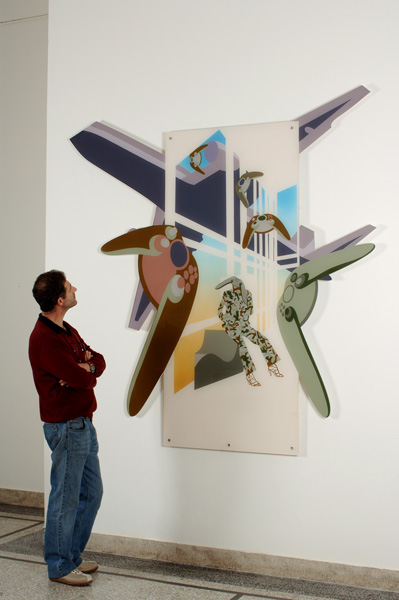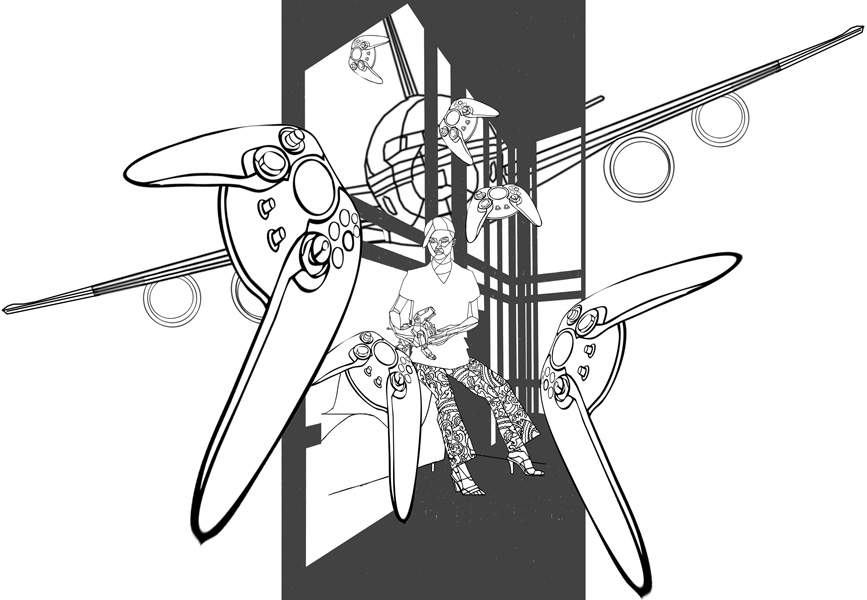2005-6 / Airports





Airports
An airport is a location where aircraft such as airplanes, helicopters, and blimps take off and land. Aircraft may also be stored or maintained at an airport. An airport consists of at least one surface such as a runway, a helipad, or water for takeoffs and landings, and often includes buildings such as hangars and terminal buildings.
Larger airports may have fixed base operator services, seaplane docks and ramps, air traffic control, passenger facilities such as restaurants and lounges, and emergency services.
A military airport is known as an airbase or air station.
The terms airfield, airstrip, and aerodrome may also be used to refer to airports, and the terms heliport, seaplane base, and STOLport refer to airports dedicated exclusively to helicopters, seaplanes, or short takeoff and landing aircraft.
(Source : Wikipedia)
Fear
Fear is an emotional response to threats and danger. It is a basic survival mechanism occurring in response to a specific stimulus, such as pain or the threat of pain. Psychologists John B. Watson, Robert Plutchik, and Paul Ekman have suggested that fear is one of a small set of basic or innate emotions. This set also includes such emotions as joy, sadness, and anger.
Fear should be distinguished from the related emotional state of anxiety, which typically occurs without any external threat. Additionally, fear is related to the specific behaviors of escape and avoidance, whereas anxiety is the result of threats which are perceived to be uncontrollable or unavoidable.
Varieties
Fear can be described with different terms in relation to the degree of fear that is experienced. It varies from mild caution to extreme phobia and paranoia. Fear is related to a number of additional cognitive and emotional states including worry, anxiety, terror, horror, panic, and dread. As an individual emotional state, fear can affect the unconscious mind, where it can become manifested in the form of nightmares. Fear may also be experienced within a larger group or social network. In this way, personal fears are compounded by social influence to become mass hysteria.
Terror is an acute and pronounced form of fear. It is an overwhelming sense of immediate personal danger. It can also be caused by perceiving the object of a phobia. Terror may overwhelm a person to the point of making irrational choices and atypical behavior. Paranoia is a term used to describe a psychosis of fear. It is experienced as longstanding feelings and perceptions of being persecuted. Paranoia is an extreme emotional state combined with cognitions, or more specifically, delusions that one is in danger. This degree of fear may indicate that one has changed his or her normal behavior in extreme or maladaptive ways.
Common fears
In a 2005 Gallup poll, a national sample of adolescents between the ages of 13 and 15 were asked what they feared the most. The question was open ended and participants were able to say whatever they wanted. The most frequently cited fear (mentioned by 8% of the teens) was terrorism. The top ten fears were, in order: terrorist attacks, spiders, death, being a failure, war, heights, criminal or gang violence, being alone, the future, and nuclear war.
Causes
People develop specific fears as a result of learning. This has been studied in psychology as fear conditioning, beginning with John B. Watson's Little Albert experiment in 1920. In this study, an 11-month-old boy was conditioned to fear a white rat in the laboratory. The fear became generalized to include other white, furry objects. In the real world, fear can be acquired by a frightening traumatic accident. For example, if a child falls into a well and struggles to get out, he or she may develop a fear of wells, heights (acrophobia), enclosed spaces (claustrophobia), or water (aqua phobia).
Although fear is learned, the capacity to fear is part of human nature. Many studies have found that certain fears (e.g. animals, heights) are much more common than others (e.g. flowers, clouds). These fears are also easier to induce in the laboratory. This phenomenon is known as preparedness. Because early humans that were quick to fear dangerous situations were more likely to survive and reproduce, preparedness is theorized to be a genetic effect that is the result of natural selection.
The experience of fear is affected by historical and cultural influences. For example, in the early 20th Century, many Americans feared polio, a disease that cripples the body part it affects, leaving that body part immobilized for the rest of one's life. There are also consistent cross-cultural differences in how people respond to fear. Display rules affect how likely people are to show the facial expression of fear and other emotions.
(Source : Wikipedia)